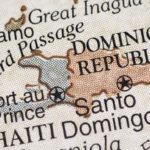
(MIAMI) — But the four indictments laid out in federal court in Miami on Wednesday tell the very real story of a presidential assassination that has thrown Haiti into chaos for nearly two years, leaving the Haitian people with a feeble government and deadly challenges—gang rule, cholera and hunger chief among them, just miles from American shores.
In total, seven suspects are now in U.S. custody and facing charges related to the July 2021 assassination of Jovenel Moïse, including the four arraigned Wednesday: Haitian-American citizens James Solages, Joseph Vincent and Christian Emmanuel Sanon, and Colombian citizen Germán Rivera García.
In contrast, the case in Haiti itself has yet to yield any indictments and is now on its fifth judge amid a string of death threats. The narrative of the case by the government of acting President Ariel Henry, installed just weeks after Moïse’s assassination with U.S. and European backing, has faced some skepticism, fueled further by this week’s charges in Florida’s Southern District.
Sanon, for example, was alleged by Haitian authorities to be a key player at the center of the assassination plot—was arrested days after the killing.
But notably, the Justice Department didn’t charge him with conspiracy to commit murder or kidnapping. In fact, he’s instead facing a separate criminal complaint of smuggling charges.
That’s not to say that U.S. investigators believe he wasn’t involved in the plot. The Justice Department said Tuesday that Sanon sought to build his own “private military” force in Haiti and wanted to replace Moïse as president.
But the criminal complaint against the other three suspects alleged that one month before the assassination, Sanon was no longer seen as a “viable” replacement for Moïse, who critics accused of an illegal power grab.
It’s not the first time doubts have been cast on the Henry government’s narrative of the case. When Sanon was arrested in July 2021, associates were saying then that he was set up, according to The Associated Press.
“Sanon told [an associate] he was approached by people claiming to represent the U.S. State and Justice Departments, who wanted to install him as president. He said the plan was for Moïse to be arrested, not killed, and Sanon would not have participated if he knew Moïse would be assassinated,” the AP reported at the time.
Instead of Sanon, Solages and others turned to a former Supreme Court justice, Windelle Coq Thélot, allegedly securing her signature on a plea for material support to arrest Moïse made just weeks before his killing. She remains on the run, wanted by Haitian authorities.
Solages prepared that document in late June during a trip to southern Florida, requesting guns and other equipment from a private security firm and helping coordinate a team of Colombian mercenaries for the job, including Rivera.
At that point, most of the group reportedly believed the plan was to kidnap Moïse, including an outrageous plot to steal a plane and whisk him away from Port-au-Prince’s airport. Ultimately, that plot “did not go forward when the conspirators failed to obtain the plane and necessary weapons for the operation,” according to court documents.
Afterward, the plot shifted to killing the controversial, embattled president, but it’s unclear who actually knew that was the plan, even up until the day before it was to be executed.
As guns and equipment were being distributed on July 6, 2021, according to court documents, Solages “falsely told those gathered that it was a ‘CIA Operation,’ and, in substance, said that the mission was to kill President Moïse. During a jailhouse interview one year after the assassination, Vincent also told U.S. investigators that members “accepted” the idea of killing Moïse only “a few days prior,” per court documents.
But Solages told investigators at the same time that he knew “by mid-June” that killing Moïse was the plan—fueling suspicions that the others could have been set up or that other individuals were pulling the strings.
Why the plot shifted to killing Moïse and why his presidential guards didn’t better protect him remain key questions, left unanswered even after seven indictments in U.S. federal court.
Nineteen months after Moïse’s murder, Haiti’s government remains in chaos. There are no elected officials left, after a group of senators finished their terms last month. That includes Henry, seen as illegitimate by many Haitians because he was put in office by a power-sharing agreement, with U.S. and European backing. He had been named Moïse’s prime minister just days before the assassination, but had not yet been installed—and to some, his appointment was unconstitutional because he had not been elected.
As governance craters, gangs have commanded even greater authority, by controlling more territory, including in the capital. Last fall, gangs were able to shut the country down, cutting it off from needed fuel and food imports.
The one institution the U.S., and allies like Canada, have continued to support is the national police force. But last week, police rioted because of a lack of local support, especially after gangs killed over a dozen officers in as many days. Those protests targeted Henry’s offices and the airport as Henry returned from Argentina, briefly impeding him from leaving the facility.
The chaos has fueled a public health challenge, too. Cholera is once again spreading, killing approximately 500 people in the last four months and infecting over 25,000, according to the Haitian Ministry of Public Health and Population.
The United Nations has even warned of famine, which by its definition means when people have started dying of starvation.
“It’s difficult to believe that a mere two hours’ flight from Miami, a staggering 4.7 million people—half of Haiti’s population—are in the throes of a food crisis,” Jean-Martin Bauer, the head of the World Food Program in Haiti, said in December.
Copyright © 2023, ABC Audio. All rights reserved.
